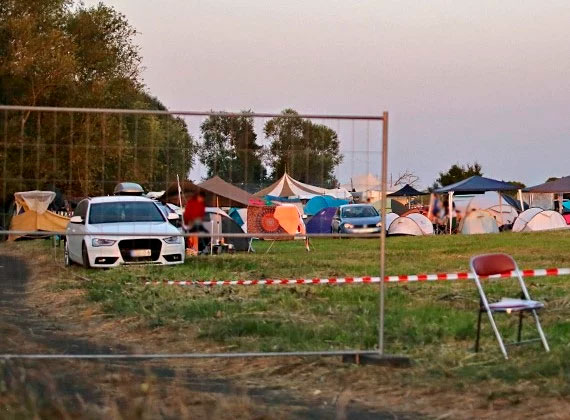From September 6th to 8th, a controversial and illegal German-organized techno festival took place on Karsibór Island, a protected area under the Natura 2000 network.
The event, called the Achterland Festival, caused significant disruption due to loud music, which alarmed local wildlife and infuriated residents.
The festival took place without approval from local authorities, who claim to have been misled by the organizers. Although the event attracted less than 1,000 participants, the noise and disruption led to over ten police interventions. The mayor of Świnoujście expressed her outrage and vowed to prevent such incidents in the future. Despite ongoing police investigations, the festival continued until Sunday morning.
The Natura 2000 network is designated to protect the most valuable and threatened habitats and species in Europe. Holding a festival in such an area undermines conservation efforts, potentially leading to long-term ecological damage. The presence of large crowds, temporary infrastructure (such as tents and stages), and pollution can degrade the quality of these habitats, making it harder to maintain the area’s biodiversity.
Large gatherings like music festivals generate significant amounts of waste, from plastic bottles and food packaging to human waste. If not properly managed, this waste could contaminate the local environment, including waterways, soil, and vegetation. Such pollution poses a risk to both terrestrial and aquatic species. Moreover, the presence of festival-goers in protected areas can introduce non-native species or harmful substances that may affect the delicate ecological balance.
Natural soundscapes are essential for the functioning of ecosystems, particularly for communication among species, such as birds. The persistent and loud music disrupts this natural sound environment, potentially confusing animals and disrupting their ability to communicate, navigate, or detect predators. This disturbance can have ripple effects throughout the ecosystem, potentially leading to changes in animal behavior or even mortality in extreme cases.
The constant human presence, along with the movement of vehicles and equipment needed for the festival, likely caused stress to both plants and animals. Trampling of vegetation, soil compaction, and other forms of physical disturbance can damage plant life and the soil structure, which are crucial for sustaining local ecosystems. Additionally, prolonged exposure to noise and human activity can lead to stress in animals, affecting their overall health and reproductive success.
Since the festival was organized without proper oversight, the long-term environmental effects may not be properly addressed or mitigated. Unauthorized events in protected areas can create precedents for further illegal activity, leading to a cumulative degradation of protected landscapes. Without proper documentation and planning, recovery efforts may be delayed, allowing environmental damage to persist and worsen over time.
The light pollution problems at this Polish festival join those that occurred in the Spanish region of Almeria, where the celebration of a similar event caused the death by stress of several specimens of an endangered Gazelle. At PLAN-B we are working to tackle these situations and to promote pollution-free areas in European ecosystems.
If you want to collaborate with our project and know all our updates please susrcribe to PLAN-B newsletter.
Photographie. iswinoujscie.pl

